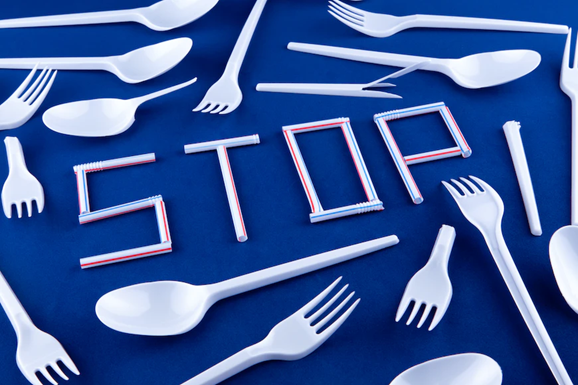Around the world, consumers purchase an astounding one million plastic bottles per minute, while up to five trillion plastic bags are used globally each year. In total, half of all plastic produced is designed for single-use purposes – used just once and then thrown away.
Plastics and microplastics are now everywhere in our natural environment. They have become such a part of the Earth's fossil record that they have even given their name to a new marine microbial habitat called the "plastisphere". Governments around the world are therefore increasing their momentum to address plastic pollution, minimise the mismanagement of plastics and prevent plastic from entering the environment. Now, Canada has embraced the momentum and become an integral part of this positive movement.
Six types of single-use plastic being banned in Canada
In June of 2022, the Canadian government announced that it would ban a number of single-use plastic items in an effort to achieve zero plastic waste by 2030. The ban was originally meant to go into action in 2021 but was delayed in part due to the Covid-19 pandemic. The government also needed more time to “ensure ready alternatives were available as the regulations came into force,” according to Olivier Bourbeau, vice-president of federal and Quebec affairs for Restaurants Canada.
Listed in the ban are six categories of single-use plastics, which together comprise around three percent of Canada’s annually generated plastic waste. These harmful single-use plastic items have been shown to end up in the environment, are often not recycled, and have readily available alternatives. The six categories of single-use plastic products being banned include:
- Straws
- Shopping bags
- Eating utensils
- Takeout containers made from hard-to-recycle plastics
- Six-pack rings for aluminum cans
- Stir sticks
The ban on the manufacture and import of these six types of items went into effect in December 2022, while the ban on their sales began in 2023. By the end of 2025, Canada will also ban the export of these plastic items.
Restrictions on plastic straws
Although Canada’s new regulations prohibit the sale of most types of plastic single-use straws, flexible or bendable straws are still allowed — although their sale is restricted.
For example, retailers can still sell packages of 20 or more flexible straws, as long as the packages are kept out of sight of customers. Flexible straws can also still be sold business-to-business, and companies will be permitted to continue selling flexible straws when packaged with a beverage container until June 20, 2024, providing that packaging was done by the company that made the drink, such as when they are sold with juice boxes.
The decision not to ban flexible straws was made to accommodate people with disabilities and those needing them for medical purposes.
Global focus on plastic pollution
The plastic crisis has increasingly become a global focus point. Many countries are already implementing measures, from bans of single-use food and beverage items, to plastic items such as bags or straws. More countries are sure to join this movement. In addition to Canada, the Polish government has now recently completed the legislative steps needed to implement its Single-Use-Plastics (SUP) Directive, which will ban the introduction of certain single-use plastic products on the market.
At Tembo Paper, we are dedicated to helping brands launch and operate their own future-proof paper straw production line. If you’re interested in learning more about our sustainable paper straws or our paper straw production line technology, contact us today.
Photo Volodymyr Hryshchenko on Unsplash.

